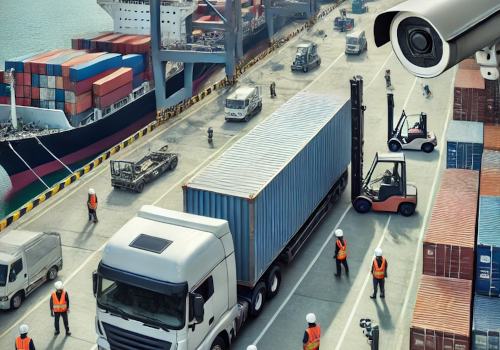In the world of logistics, ensuring the security of cargo is paramount. With the increasing complexity of supply chains, it’s essential to have robust practices in place to safeguard your loads from the moment they arrive at your facility to the time they reach their final destination. This blog post outlines critical best practices for load security, focusing on the importance of partnerships, documentation, training, and physical security measures.
Document your process
The foundation of any effective security strategy is thorough documentation. A well-documented process provides a clear roadmap for all stakeholders, ensuring consistency and accountability. By documenting every step of your dock and yard management procedures—from load arrival to departure—you create a reliable record that can be referenced in case of discrepancies or incidents. This documentation should include detailed checklists for inspection, loading, and sealing procedures, as well as protocols for handling any deviations or anomalies.
Training and awareness
Even the most comprehensive security procedures are only as effective as the people implementing them. Training and awareness programs are essential to ensure that everyone involved in the dock and yard operations understands their role in maintaining security. Regular training sessions should be conducted to educate staff on the latest security threats, proper handling of sensitive information, and the correct procedures for securing loads. Awareness campaigns can also be employed to keep security top of mind, reinforcing the importance of vigilance and adherence to established protocols.
“Know your partner“
The security of your cargo is directly tied to the reliability of your carrier. This is where the principle of “Know your partner” comes into play. Establishing strong relationships with trusted carriers who have a proven track record of security and reliability is crucial. Conduct thorough background checks and regularly assess your carriers’ performance. Ensure that your carriers adhere to your security standards and are transparent about their own procedures. By knowing your carrier, you reduce the risk of your cargo being compromised during transit.
Cargo load photos
In today’s digital age, photos are an invaluable tool for verifying the condition and security of cargo. Taking detailed photos of each load before it leaves the dock serves as a visual record that can be referenced if any issues arise during transit. These photos should capture the entire load, focusing on how the cargo is packed, any visible security measures such as seals, and the condition of the truck or container. By maintaining a comprehensive visual record, you can quickly address any claims of damage or tampering.
Seals for truck loads
One of the most effective ways to prevent unauthorized access to your cargo during transit is by using seals on truck loads. These seals act as a physical deterrent to tampering and provide a clear indication if a load has been accessed. It’s important to use high-quality, tamper-evident seals that are uniquely numbered, allowing for easy tracking and verification. Make sure to document the seal number in your records and ensure that it matches the number recorded when the load arrives at its destination. Regularly review and update your sealing protocols to align with industry best practices.
Secure your yard and loading dock
The final line of defense in load security is the physical security of your yard and loading dock. Ensure that your facility is equipped with adequate fencing, lighting, and surveillance systems to deter unauthorized access. Implement strict access control measures, such as requiring identification for all personnel entering the yard, and ensure that only authorized individuals are allowed near the loading and unloading areas. Regularly inspect your facility’s security infrastructure and make necessary upgrades to address any vulnerabilities.
Conclusion
In the logistics industry, security is not just a priority—it’s a necessity. By following these best practices in load security, you can significantly reduce the risk of cargo theft, damage, or tampering. Remember, the key to effective security lies in knowing your partner, documenting your processes, and continuously educating your team on the importance of vigilance. With a comprehensive approach to dock and yard management, you can ensure that your cargo reaches its destination safely and securely.
Phillip Avelar is Managing Partner at Advanced Solutions in Chicago, helping SAP enterprises streamline supply chains and drive innovation. An AI and robotics enthusiast, he began working with neural networks in the 1990s and now applies that passion to solving real-world Supply chain challenges. He shares insights through blogs, publications, and conference talks.

